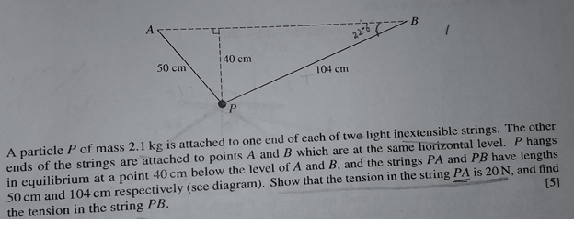How to do this through lami theorem?

1 Answer
From Lami's theorem we know that if three coplanar, concurrent and non-collinear forces, having magnitudes as
#A /sinα = B/ sinβ = C/ sinγ# ......(1)
where#α, β and γ# are the angles directly opposite to three forces#A, B and C# respectively.
Three coplanar, concurrent and non-collinear forces are tensions in two strings and weight
Taking
Using (1) we get
#21/(sin104.25)=T_(PA)/(sin112.62)=T_(PB)/(sin143.13)#
Using first equality we get
#T_(PA)=20\ N#
Similarly
#T_(PB)=13\ N#
